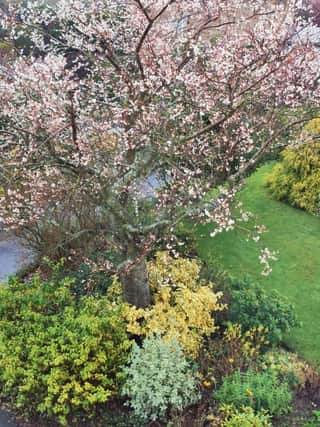GARDENING: heady heayd heady heady heayd


That's why this year`s seed list sparks a feeling of deja vu. However, this does not mean that everything new to the scene is ignored. Vegetable, fruit, and ornamental plants are constantly improving, and are subject to stringent trials before their launch
on the market. They are all worthy of consideration.
Each year the main seed firms highlight key features of varieties new to their catalogues. These include the cropping potential, hardiness, disease resistance, and the best way to test such claims is by growing them. This I do, but every garden, mine included, has limited space, so careful thought is given to the choice.
Advertisement
Hide AdAdvertisement
Hide AdViewing trial results can be a decisive factor and The Royal Horticultural Society (RHS) help in publishing theirs. The Award of Garden Merit (AGM) is given to those plants that have performed well and are deemed worthy of growing. So, it`s worth looking for this acronym next to a plant in the catalogue.
A current issue of “The Garden” (RHS) has an article in which twelve top growers name their best performing vegetables, all of which have achieved the AGM. Two of those chosen are permanent fixtures on my annual seed order – early potato `Red Duke of York` and Beetroot `Boltardy.` The former was discovered in a Dutch crop of `Duke of York` in 1942 and has remained on the good-to-grow list ever since. It can go in as a first early type, ideal for salads, or as a main cropper for roasting or chips. These potatoes are currently chitting in trays in a light, frost-free environment. The beetroot seeds, sown in March, are well named, performing in the most trying of soils and weather conditions without running to seed prematurely.
Runner bean `Enorma` is also in the top dozen. Brilliant for show purposes, the pods can grow 50 centimetres long and taste good. We occasionally grow it alongside a different new variety.
So, which of these are we trying this time? Two have caught the eye. Garden pea `Show Perfection` looks like the legendary exhibition favourite `Greenshaft` and has ten or more peas to the pod. A cherry tomato `Bite Size` sounds interesting too. Let's see how it fares alongside our favourite `Gardener's Delight!`.
Advertisement
Hide AdAdvertisement
Hide AdPlanning for the season ahead was one of several issues this fellow addressed last week as guest speaker at Lesbury Garden Club, when I honoured a long-standing engagement. But don`t worry, everything was above board and in keeping with current restrictions. With our village hall base closed during lockdown, how could I ignore the enthusiasm of members for a gardening get-together online via a Zoom presentation.
I have missed the live interaction with fellow gardeners, especially that of taking group tours as a member of the Alnwick Poison Garden Team. It's almost a year since my last one but those deadly plants remain fresh in the mind's eye. So, it was rather cathartic reaching out from the study into the homes of enthusiasts and inviting a response. Surrounded by a diversity of seasonal plant materials, seedlings, plugs, cell trays, shrubs, I was able to hold out a hand and a well-organised assistant (off-screen) provided the relevant materials as if by magic. My part was enjoyably simple, talking about whatever appeared!
The allotted 40 minutes online slot passed in a heartbeat, but coordinating host Jean, realising that any questions remained to be addressed, invited us to sign in again. I offered an update on the prolonged use of peat in horticulture, trials on sustainable modular trays, and slug control in the absence of poisonous pellets. Then questions followed: Controlling garden moles, cultivating
gentians, and the best time to sow chilli peppers. The latter need warmth for germination and growth, starting in February so I buy young plug plants in March. `How do I stop the carrot fly?` asked Jan. Fix a fleece covering over the sown seed drills leaving room for crop development, and don`t remove it until they're ready for harvesting.